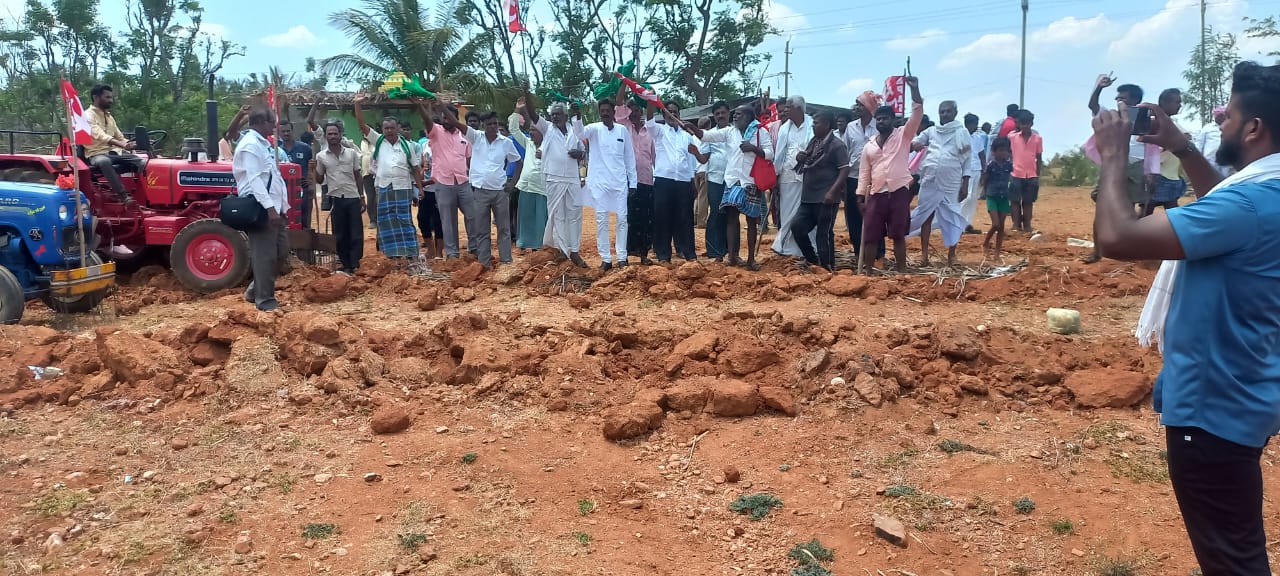Budget 2018-19: Lies and Deceit to Betray Farmers
The Finance Minister Arun Jaitley presenting his last full budget before the 2019 General Elections has resorted to lies and deceit to betray farmers who have been reeling under acute agrarian crisis. After having promoted corporate loot and crony capitalism in the name of “Ease of Doing Business” he is seeking to hoodwink the peasantry, working class, poor and the middle class by claiming that the BJP-led NDA Government has moved to “Ease of Living” for them. The budget which has come at a time when massive farmers’ protests have demanded remunerative prices and liberation from debt has failed to address these issues. A Kisan Sansad had also proposed two Bills to ensure Assured Remunerative Price and liberation from indebtedness.
First and foremost, the betrayal is on the demand of the peasantry for Assured Remunerative Prices. After having reneged on Narendra Modi’s election time promise of providing MSP according to the recommendations of National Commission of Farmers which had recommended MSP at least 50 percent above the cost of production (C2) the Finance Minister now claims that they have already implemented the recommendations for the Rabi season and claims that for the next Kharif MSP will be given at the rate of 150 percent above cost of production. This is a blatant misrepresentation of facts as shown by the table below for the latest MSP announced for Rabi, 2018-19. Even if we take the Finance Minister’s announcement at face value there are no allocations for meeting the expenses and for ensuring payment of deficit in price to farmers in the event of them receiving prices below MSP.
| Rabi 2018-19 Projected Cost of Production C2, C2+50 and MSP Announced | |||
| Crop | C2 (Cost of Production) | C2+50%
|
MSP Announced |
| Wheat | 1256 | 1884 | 1735 |
| Barley | 1190 | 1785 | 1410 |
| Gram | 3526 | 5289 | 4400 |
| Lentil | 3727 | 5590.5 | 4250 |
| Rapeseed and Mustard | 3086 | 4629 | 4000 |
| Safflower | 3979 | 5968.5 | 4100 |
Also it is to be noted that the C2 calculations itself are disputed and farmers’ organisations have been calling for correct cost calculations. The weighted average cost of production taken into consideration by the Commission on Agricultural Costs and Prices also disregards the State Government cost calculations. Over and above that the MSP announced for most crops is only notional as there is no procurement mechanism in most parts of the country. So without having a procurement mechanism in place there is no assurance of the announced MSP accruing to farmers. Nothing has been done in this direction.
Secondly, the BJP led Government has betrayed the farming community and rural poor by refusing to announce any policy for liberation from indebtedness for the peasantry. It then goes on to claim that agricultural credit has been increased by 10 percent by Rs.1 lakh crore to Rs.11 lakh crore although it is not a budgetary provision. This would be disbursed through all three institutions of agricultural credit: commercial banks, credit cooperatives and Regional Rural Banks. This is a simple and mechanical 10 per cent increase without: (a) any attention to a far higher increase in the cost (including wage) pressures in agriculture (b) any directed efforts to make fresh agricultural loans to the non-loanee farmers and bringing them into the ambit of formal finance (c) correcting for the institutional imbalance in agricultural credit with a near-collapse of the cooperative system in most parts of India following demonetisation (d) addressing the regional and borrower-level disparity in the distribution of agricultural credit. Even as per the latest data for 2016, about one-fourth of the agricultural credit is given by urban branches India. Only about 41 per cent of the agricultural credit is given to small and marginal farmers (represented by loans of up to Rs. 2 lakh), while about 14 per cent of agricultural credit carries a loan size of more than Rs. 1 crore going to institutions and corporates engaged in agricultural production. The Finance Minister speaks about lessee farmers’ inability to avail crop loans but has not made any concrete suggestion to overcome the problem.
Thirdly, the agricultural workers and rural poor who have seen falling incomes and increasing migration have nothing in the Budget. No increase in MGNREGA allocation has been made. Rs.55,000 crore allotted is equal to the revised estimate for 2017-18. Even by conservative estimates more than Rs.80,000 crores will be required for proper implementation of the programme. This callous attitude is despite the fact that over 56 percent of wages were pending and more than 15 percent of the wage seekers did not find any work in 2016-17. As of 25th January, eight states had a net negative balance of Rs.1,555 crores in terms of MGNREGA funds, i.e, they spent more than they received from Centre. In 2016-17 while there were 89 million job seekers only 76 million found work. States have been witnessing drastic cut in allocations and the average work days under MGNREGA have been abysmally below what is stipulated in the Act. Without addressing these issues the Budget talks of providing maximum livelihood opportunities in rural areas and talks of creating employment of 321 crore person days, although there are no concrete proposals to generate employment.
The Budgetary proposals for agriculture are aimed to help the corporate agribusinesses and have no vision for promoting farmers’ welfare. The Budget fails to deliver on the demands of the farmers, agricultural workers and the poor. AIKS calls upon all its units to rise in protest against the insensitive approach of the BJP led Government.
Sd/-
Ashok Dhawale, President
Hannan Mollah, General Secretary



